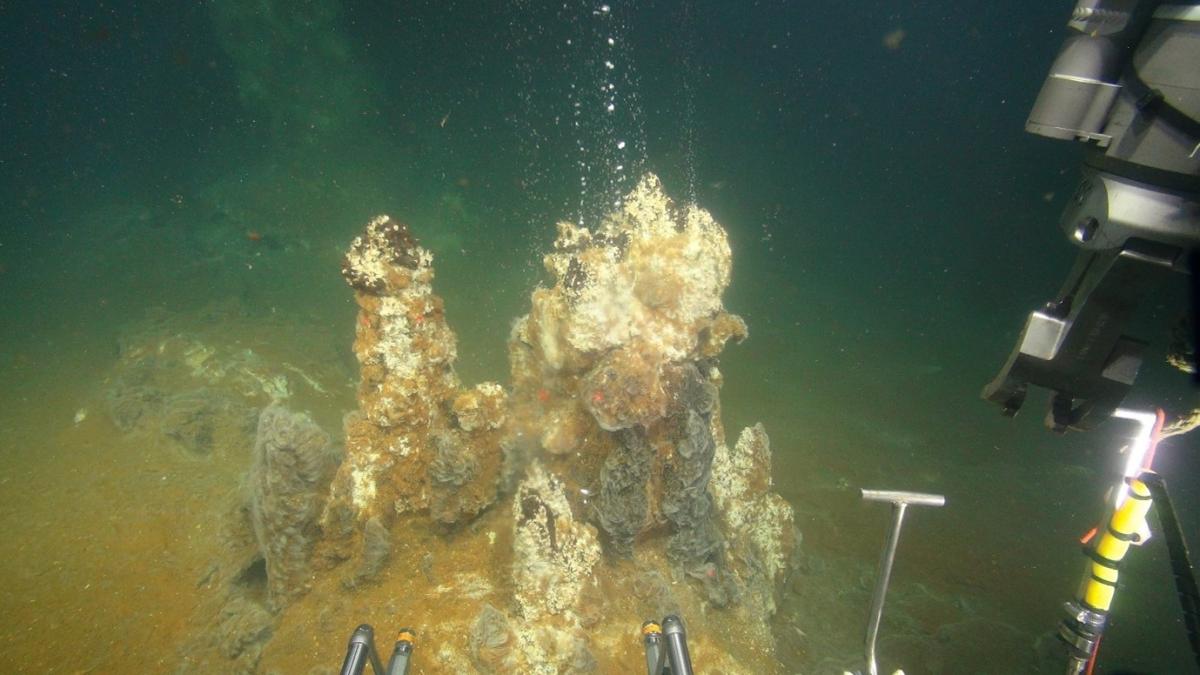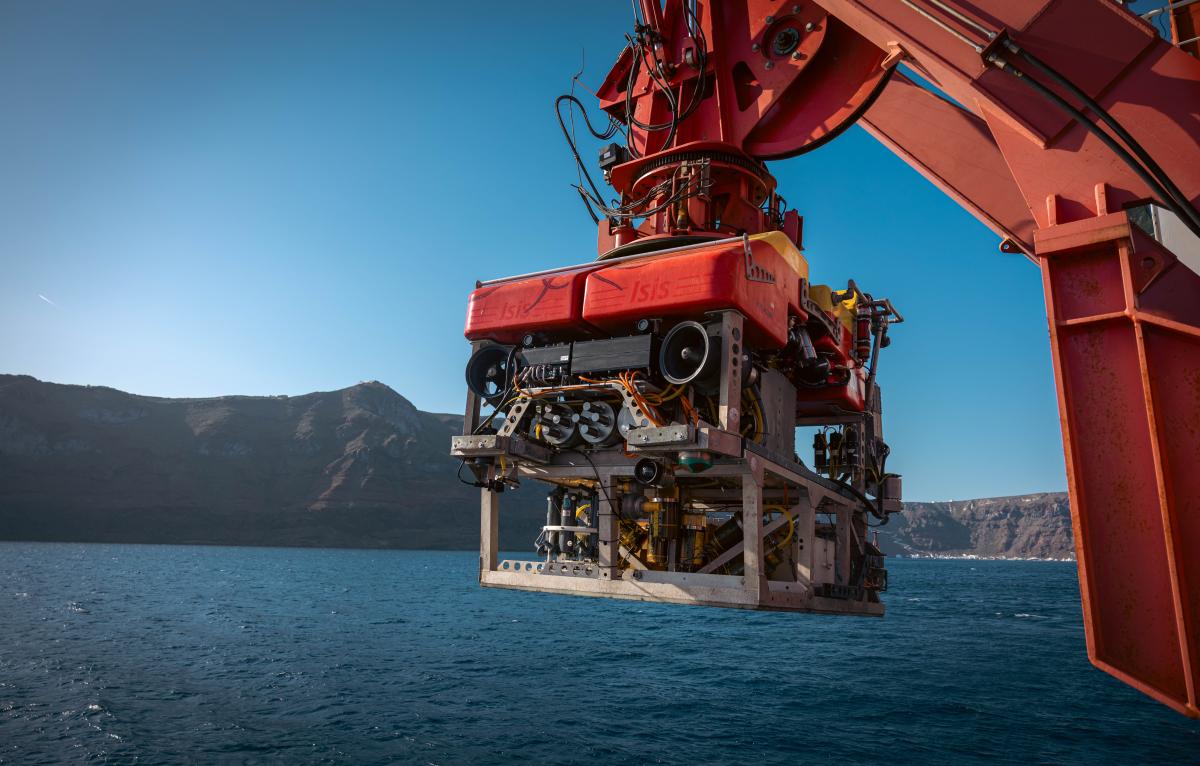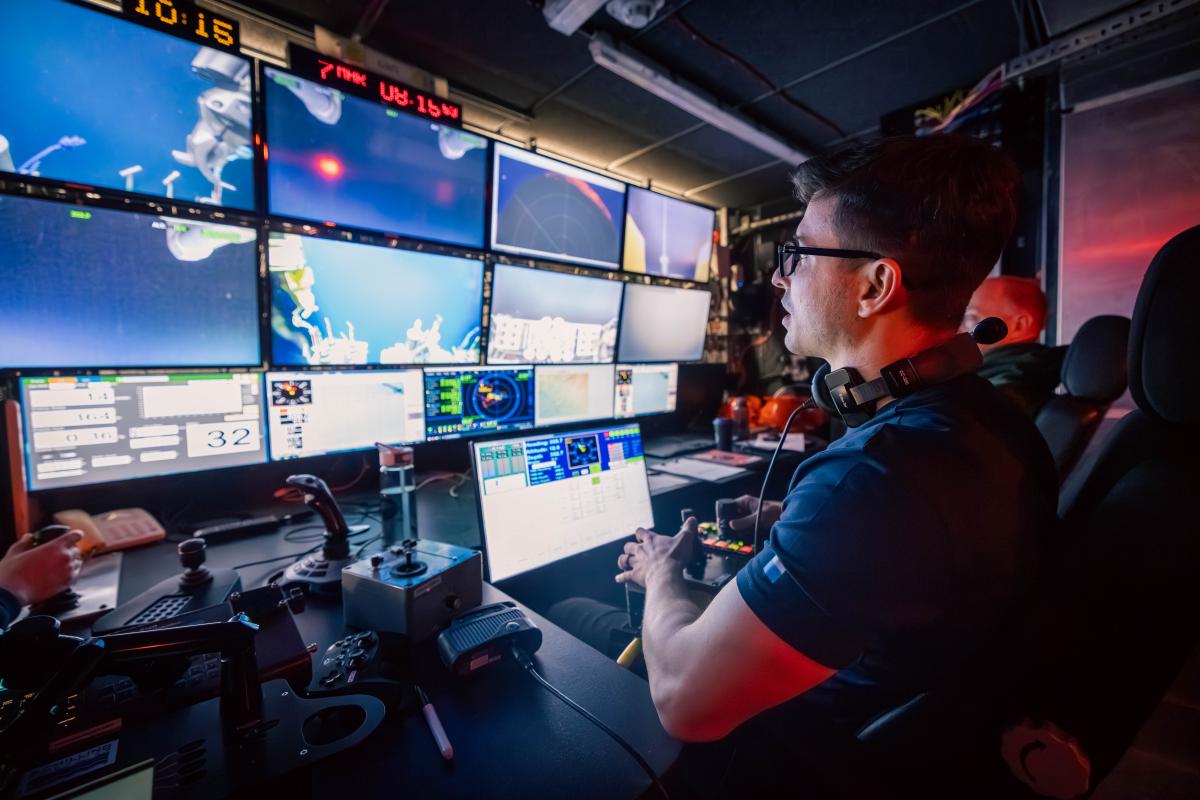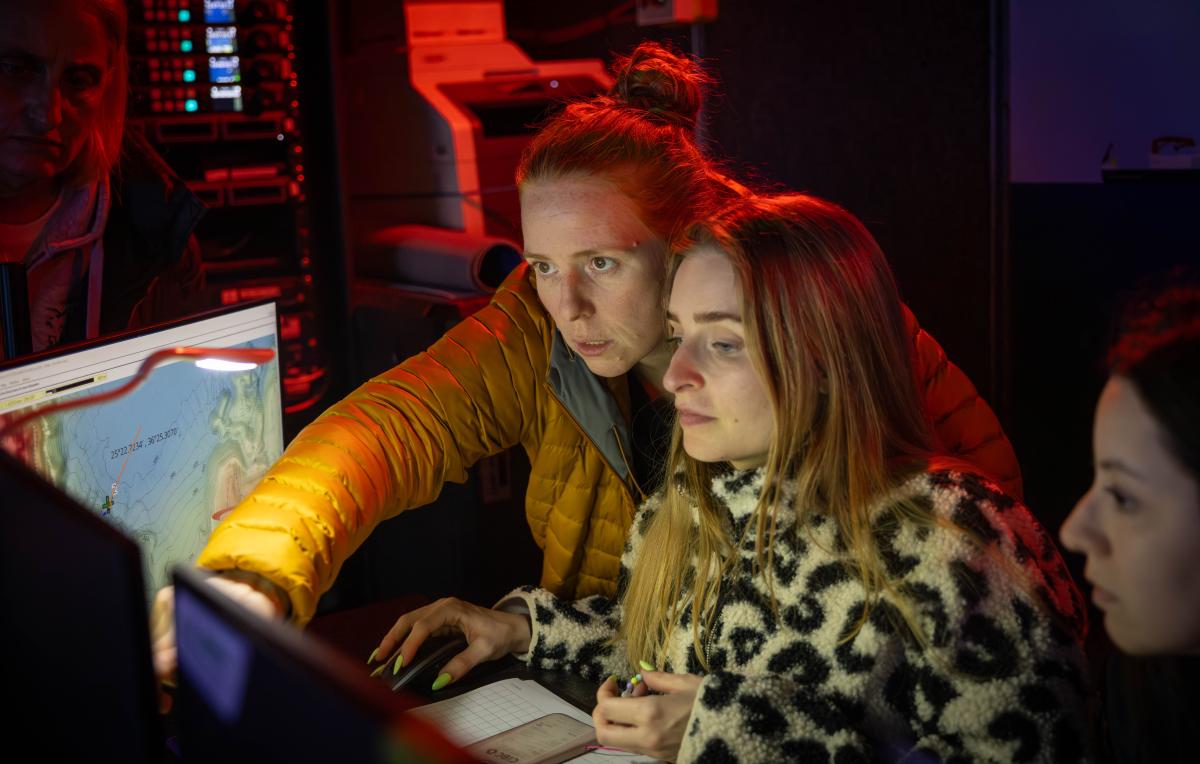
Scientists from the UK’s National Oceanography Centre (NOC) have led an international team on a groundbreaking expedition in and around Santorini, Greece, to enhance our ability to forecast and understand the hazards posed by Earth’s most explosive volcanic eruptions.
Hundreds of the most dangerous volcanoes on Earth are found in the ocean, but almost none are monitored, making the hazards for nearby coastal communities and critical infrastructure difficult to forecast.
In the ocean, the explosivity of eruptions is complicated by interactions with seawater and fluids circulating through volcanoes, making them even more unpredictable.
Using advanced underwater robots, including the NOC remotely operated vehicle (ROV) Isis, world-leading scientists and engineers have studied how circulating fluids interact with magma deep beneath the Earth's surface. By mapping how fluid pathways connect to magma chambers and how these systems respond during volcanic events, they aim to revolutionize understanding of how fluid circulation can influence the strength and hazard of volcanic eruptions.
The Minoan eruption of Santorini, and the 1650 eruption of nearby offshore Kolumbo volcano (Greece) were so large that the ground above collapsed into the space left by the emptying magma chamber, leaving a large hole in the ground, known as a caldera. Such large eruptions can have devastating consequences, as demonstrated recently by the 2022 Hunga Volcano eruption, the most explosive eruption this century, which generated tsunamis and severed telecommunications cables that connected the Kingdom of Tonga to the global internet.
During the expedition, scientists investigated both Santorini and Kolumbo, looking at different types of hydrothermal venting, from seeps that form underwater lakes of carbon dioxide, to bubbly venting at temperatures up to and exceeding 200ºC.
By looking at the diversity of hydrothermal venting, the team aims to understand the full range of fluid flow styles and the role they could play in future volcanic activity, not just in Santorini and Kolumbo, but also around the world. This work will help to better forecast volcanic hazards and aid responses to future periods of unrest.
Dr Isobel Yeo, Marine Volcanologist and expedition lead from NOC said: “Eruptions such as Hunga Volcano in 2022 demonstrate how important it is that we understand the hazards posed by submarine volcanoes, which are much harder to monitor and observe than those on land. The role fluid circulation plays in volcanic explosivity is fundamental but poorly constrained, making future events at submarine volcanoes harder to forecast and increasing uncertainty in hazard planning and mitigation.
“While there is no indication the volcanoes we are working on pose an immediate risk, this internationally collaborative work will provide urgently needed constraints on these processes, working with our colleagues in Greece and around the world, to improve our understanding of the hazards at some of the most dangerous volcanoes on the planet.”

The expedition comes at a time of heightened earthquake activity in Santorini, meaning scientists onboard have also been able to support the effort to better understand the causes and locations of earthquakes, as well as the impact of the seismic activity on the volcanic systems.
Professor Paraskevi Nomikou, Marine Geologist at the National and Kapodistrian University of Athens said: “Through the HYDROMOX expedition we are measuring earthquakes and investigating how the hydrothermal fields inside the calderas of Santorini and Kolumbo have been affected by the earthquakes. This is an important step towards mitigating potential risks for the Santorini-Anhydros region and will inform the Greek authorities in terms of geohazard assessment.
“During this expedition, we collected a plethora of fluids, gases, sediments and vent samples and conducted temperature measurements near the hydrothermal vents. The analysis of this dataset will be compared with the datasets collected before the seismic crisis under the framework of the SANTORini seafloor observatorY (SANTORY).”
Having made exciting discoveries in the field, the international team will now combine geophysical, geological and geochemical analysis of their samples and data to unravel the complicated relationships between volcanic and hydrothermal systems at Santorini and elsewhere, and aid our ability to forecast hazard at some of the world’s most dangerous volcanoes.
The expedition forms part of the NOC-led Hydrothermal Controls on Caldera Explosivity project, in collaboration with project partners National and Kapodistrian University of Athens, GEOMAR Helmholtz Centre for Ocean Research Kiel, University of Southampton, Queensland University of Technology, Woods Hole Oceanographic Institute, University of Auckland, The United States Geological Survey (USGS), University of Oregon, University of Bergen, University of Ottawa, University of Leeds, University College London, Centre National de la Recherche Scientifique, Japan Agency for Marine-Earth Science and Technology and Memorial University of Newfoundland.
Watch: News Splash
Dr Isobel Yeo talks about the team’s revolutionary research onboard RRS Discovery, funded by the Natural Environment Research Council (NERC) which will help us to better forecast volcanic hazards and aid responses to future periods of unrest.
Press enquiries
For further information, images and video, please contact Jess Allen at: media@noc.ac.uk



